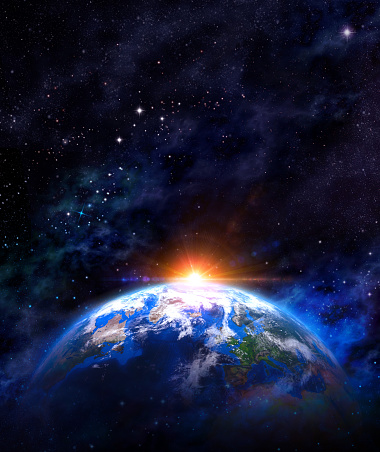Earth-sun distance dramatically alters seasons in the equatorial Pacific in a 22,000-year cycle

At some times of the year, the earth is closer to the sun. The time of the closest approach shifts over 22,000 years. This change affects the climate of the earth. Now, scientists have discovered that it also affects the yearly weather pattern.
Currently, the earth is about 3 million miles closer to the sun than its farthest point. The closest approach is known as perihelion and the farthest is known as aphelion. As a result of the closest approach, sunlight is approximately 7% more intense at perihelion compared to aphelion. The distance between the earth-sun varies over the year. This is caused due to the earth's orbit as it is slightly elliptical.
New computer simulations have shown that one driver of yearly weather cycles in the equatorial Pacific, specifically in a cold tongue (Cold tongue is referred to as surface waters stretching westward along the equator from the coast of South America) influences the El Niño-Southern Oscillation (ENSO). This impacts the weather in California and mostly in North America. It also affects global weather.

Keywords: the earth, the sun, distance, El Niño-Southern Oscillation (ENSO), equatorial Pacific, Cold tongue, El Niño, La Niña
New research led by the University of California, Berkeley has demonstrated that the slight yearly change in the distance between the earth and the sun can largely impact the annual cycle of the cold tongue.
Lead researcher John Chiang, UC Berkeley professor of geography said, "The curious thing is that the annual cycle from the distance effect is slightly longer than that for tilt -- around 25 minutes, currently -- so over a span of about 11,000 years, the two annual cycles go from being in phase to out of phase, and the net seasonality undergoes a remarkable change, as a result".
The main cause of global weather changes is seasonal change. The Northern and Southern hemispheres are illuminated differently as the earth's equator is tilted to the orbit around the sun. When the sun shines overhead in the north, the northern region experiences a warmer climate and the south region experiences a colder climate and vice versa.
These yearly changes majorly affect Pacific equatorial trade winds that blow from southeast to northwest across the south and equatorial Pacific. They push surface water westwards. This causes the upwelling of cold water along the equator which creates a tongue of cold surface water that stretches from Ecuador across the Pacific. It occupies almost one-quarter the circumference of the planet. These changes also alter the strength of the trades which in turn, has a major influence on ENSO.

The occurrence of El Niño or La Niña helps in determining the winter phase for California and the West Coast and rain or drought in the Midwest and parts of Asia. Broccoli, co-director of the Rutgers Climate Institute said, "In studying past climates, much effort has been dedicated to trying to understand if variability in the tropical Pacific Ocean -- that is, the El Niño/La Niña cycle -- has changed in the past. We chose to focus instead on the yearly cycle of ocean temperatures in the eastern Pacific cold tongue. Our study found that the timing of perihelion -- that is, the point at which the earth is closest to the sun -- has an important influence on climate in the tropical Pacific".
Researcher Chiang said, "The traditional way of thinking about monsoons is that the Northern Hemisphere warms up relative to the Southern Hemisphere, generating winds onto land that bring monsoon rains. But here, we're actually talking about east-west, not north-south, temperature differences that cause the winds. The distance effect is operating through the same mechanism as the seasonal monsoon rains, but the wind changes are coming from this east-west monsoon".
The winds generated by the differential heating of the marine and continental hemispheres alter the yearly variation of the easterly trades in the western equatorial Pacific, and thereby the cold tongue. According to the researcher, the current effect of distance on the cold tongue is about one-third the strength of the tilt effect.
This research has surely added value to the past research based on the climate/ weather changes caused due to the distance between the sun-earth.
Story Source:
Materials provided by University of California - Berkeley. The original text of this story is licensed under a Creative Commons License. Note: Content may be edited for style and length.
Journal Reference:
- John C. H. Chiang, Alyssa R. Atwood, Daniel J. Vimont, Paul A. Nicknish, William H. G. Roberts, Clay R. Tabor, Anthony J. Broccoli. Two annual cycles of the Pacific cold tongue under orbital precession. Nature, 2022; 611 (7935): 295 DOI: 10.1038/s41586-022-05240-9
0 Comments